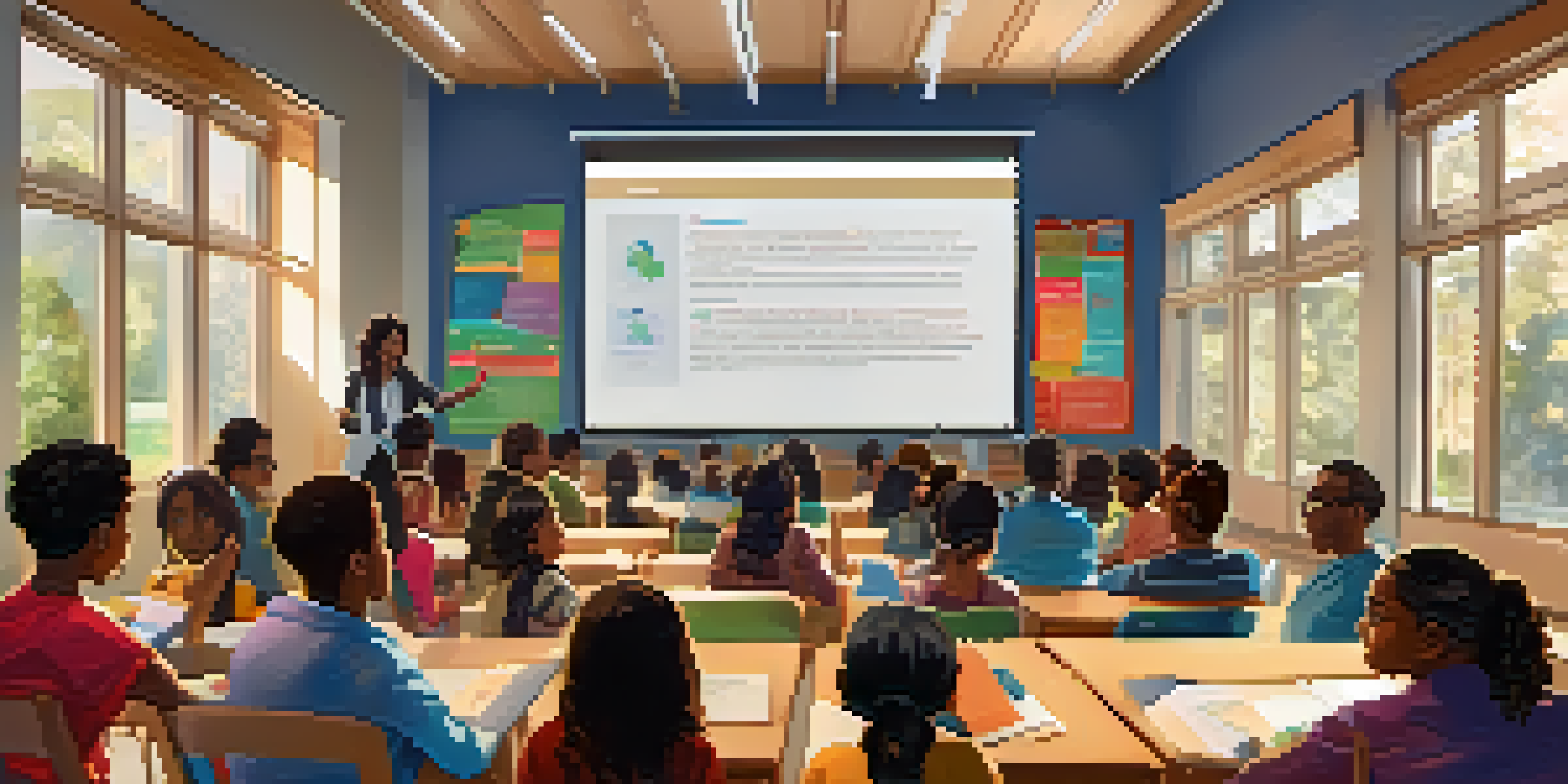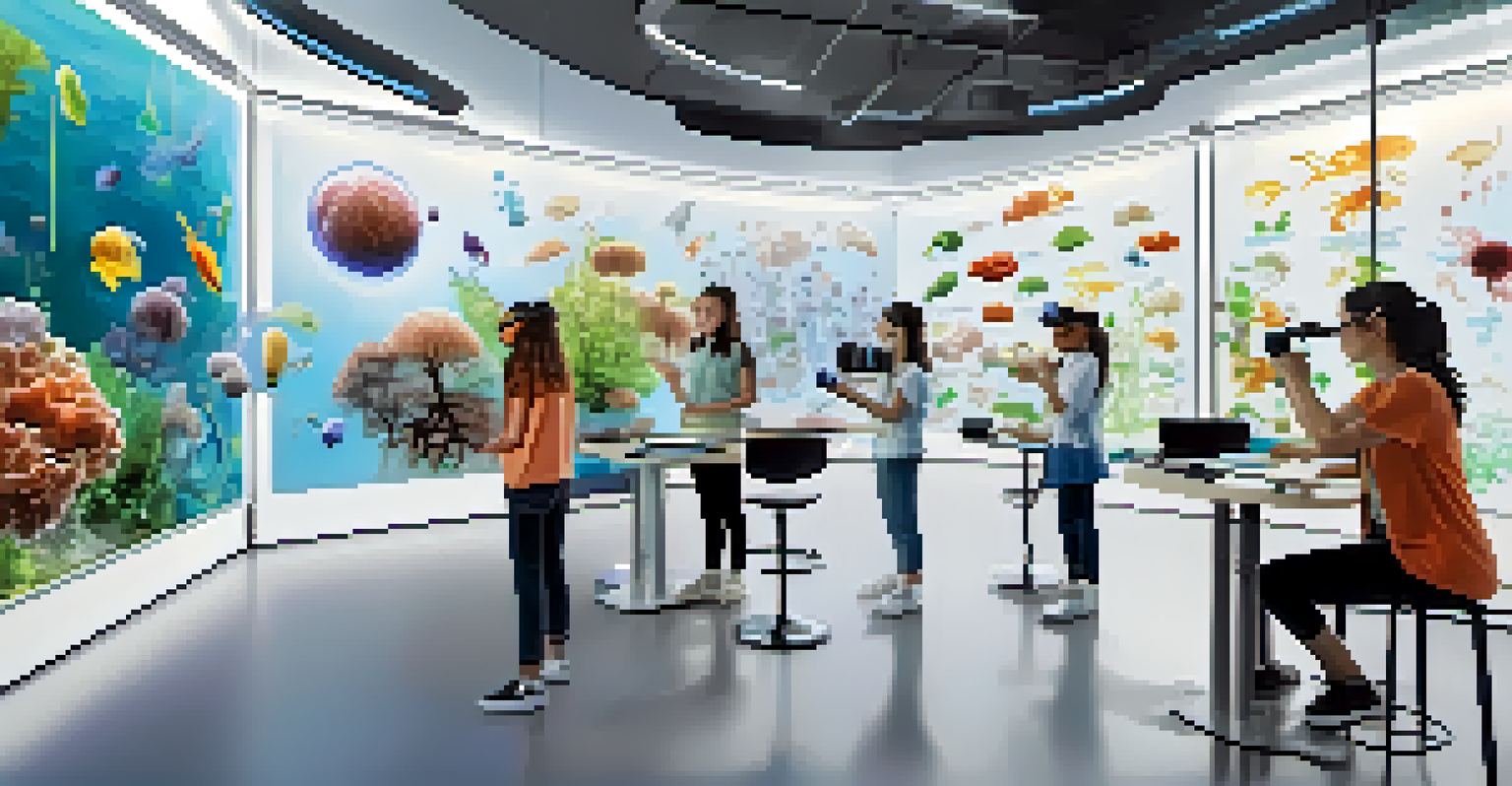Using Learning Management Systems for Virtual Classrooms

Understanding Learning Management Systems (LMS)
Learning Management Systems, or LMS, are digital platforms designed to facilitate educational processes. They allow educators to create, manage, and deliver content seamlessly to students, making learning more accessible. Think of an LMS as a virtual classroom where resources, assignments, and discussions can all happen in one place, no matter where students are located.
Education is the most powerful weapon which you can use to change the world.
With features like course tracking, grading systems, and interactive content, LMS platforms streamline the educational experience for both teachers and students. They can house multimedia elements like videos and quizzes, which cater to different learning styles. This versatility means that students can engage with materials in ways that suit them best, enhancing understanding and retention.
Moreover, LMS platforms often come with analytics tools that provide insights into student performance. Educators can see which topics students struggle with and adjust their teaching strategies accordingly. This data-driven approach helps create a more tailored learning experience, making education more effective.
Benefits of Virtual Classrooms
Virtual classrooms offer a flexible learning environment that can adapt to various needs and schedules. Students can attend classes from anywhere, which is particularly beneficial for those balancing work or family commitments. This flexibility often leads to higher attendance rates and increased engagement since learners can participate in a way that suits them best.

Another major advantage is the accessibility of resources. In a virtual classroom, materials are typically available 24/7, allowing students to review lectures and assignments at their own pace. This self-directed learning helps students to take ownership of their education, encouraging them to delve deeper into subjects that interest them.
LMS Enhances Learning Experience
Learning Management Systems streamline educational processes by providing a centralized platform for content delivery and student engagement.
Additionally, virtual classrooms foster a global learning community. Students can connect with peers and instructors from different geographical locations, broadening their perspectives. This diversity enriches discussions and collaborative projects, making learning a more dynamic and inclusive experience.
Integrating LMS with Virtual Learning
Integrating LMS into virtual learning creates a cohesive educational experience. By combining the structured environment of an LMS with the interactive nature of virtual classrooms, educators can enhance student engagement. For instance, live sessions can be recorded and uploaded to the LMS, allowing students to revisit complex topics as needed.
The beautiful thing about learning is that no one can take it away from you.
Moreover, many LMS platforms facilitate real-time communication through discussion boards and chat features. This interaction mimics in-person classroom discussions and promotes a sense of community among students. Such engagement is essential for keeping students motivated and connected, especially in a virtual setting.
Additionally, LMS integration allows for easier assignment submission and feedback collection. Students can submit their work directly through the platform, and instructors can provide timely feedback, fostering a continuous learning loop. This streamlined process not only saves time but also enhances the overall educational experience.
Creating Engaging Content in LMS
Creating engaging content is key to keeping students interested in virtual classrooms. With an LMS, educators can incorporate various multimedia elements, such as videos, podcasts, and interactive quizzes, to cater to different learning styles. This variety helps to break up traditional lecture formats and keeps students actively involved in their learning.
For example, using gamification techniques, such as leaderboards and badges, can motivate students to participate more fully in their courses. When learning feels like a game, students are likely to engage with the material more deeply and enjoy the process. This not only enhances learning outcomes but also makes the experience more enjoyable.
Virtual Classrooms Boost Flexibility
Virtual classrooms offer students the flexibility to learn from anywhere, accommodating diverse schedules and enhancing participation.
Furthermore, regular updates and fresh content can keep the learning experience dynamic. Educators can introduce current events or trending topics related to their courses, making discussions more relevant. By continuously evolving the curriculum, instructors can maintain student interest and foster a love for learning.
Assessing Student Progress with LMS
One of the standout features of an LMS is its ability to assess student progress efficiently. Instructors can set up various assessment types, from quizzes to projects, and track student performance in real-time. This immediate feedback loop empowers educators to identify areas where students may be struggling and offer targeted support.
Additionally, LMS platforms often provide analytics and reporting tools that make it easy to visualize student performance trends. For example, instructors can see which students are excelling or those who might need additional resources. This insight allows for timely interventions that can help improve overall student success.
Moreover, self-assessment opportunities can also be integrated into LMS platforms. Students can reflect on their learning and identify their strengths and weaknesses. This encourages a growth mindset, as they take charge of their learning journey and set personal goals.
Overcoming Challenges in Virtual Learning
While virtual classrooms and LMS offer numerous benefits, they also come with unique challenges. One common issue is the potential for technical difficulties, which can disrupt learning. To mitigate this, institutions should provide robust training and support for both educators and students, ensuring that everyone feels comfortable using the technology.
Another challenge is maintaining student engagement in a virtual setting. Without the energy of an in-person classroom, students may struggle to stay focused. To combat this, educators can use interactive tools such as polls, breakout rooms, and group projects to create a more dynamic and engaging learning environment.
Future Trends: AI and VR Integration
Emerging technologies like AI and VR are set to personalize and enrich learning experiences within LMS, making education more immersive and tailored.
Finally, fostering a sense of community can be difficult in virtual classrooms. To address this, instructors should actively encourage collaboration and communication among students. Creating opportunities for peer interactions, such as study groups or discussion forums, can help build relationships and a sense of belonging, which is crucial for a positive learning experience.
Future Trends in Virtual Classrooms and LMS
As technology continues to evolve, so too will virtual classrooms and Learning Management Systems. One emerging trend is the use of artificial intelligence (AI) to personalize learning experiences. AI can analyze student behavior and preferences, delivering tailored content that meets individual needs and enhancing learning outcomes.
Another exciting development is the integration of virtual reality (VR) and augmented reality (AR) into LMS platforms. These technologies can create immersive learning experiences, allowing students to explore complex concepts in a more interactive way. Imagine studying biology and virtually dissecting a frog or exploring ancient civilizations through an AR experience.

Finally, the increased emphasis on lifelong learning is shaping the future of virtual classrooms. As the job market evolves, professionals will need to upskill and reskill continuously. LMS platforms will play a crucial role in providing accessible, flexible learning opportunities for adult learners, ensuring that education remains relevant and adaptable in our rapidly changing world.